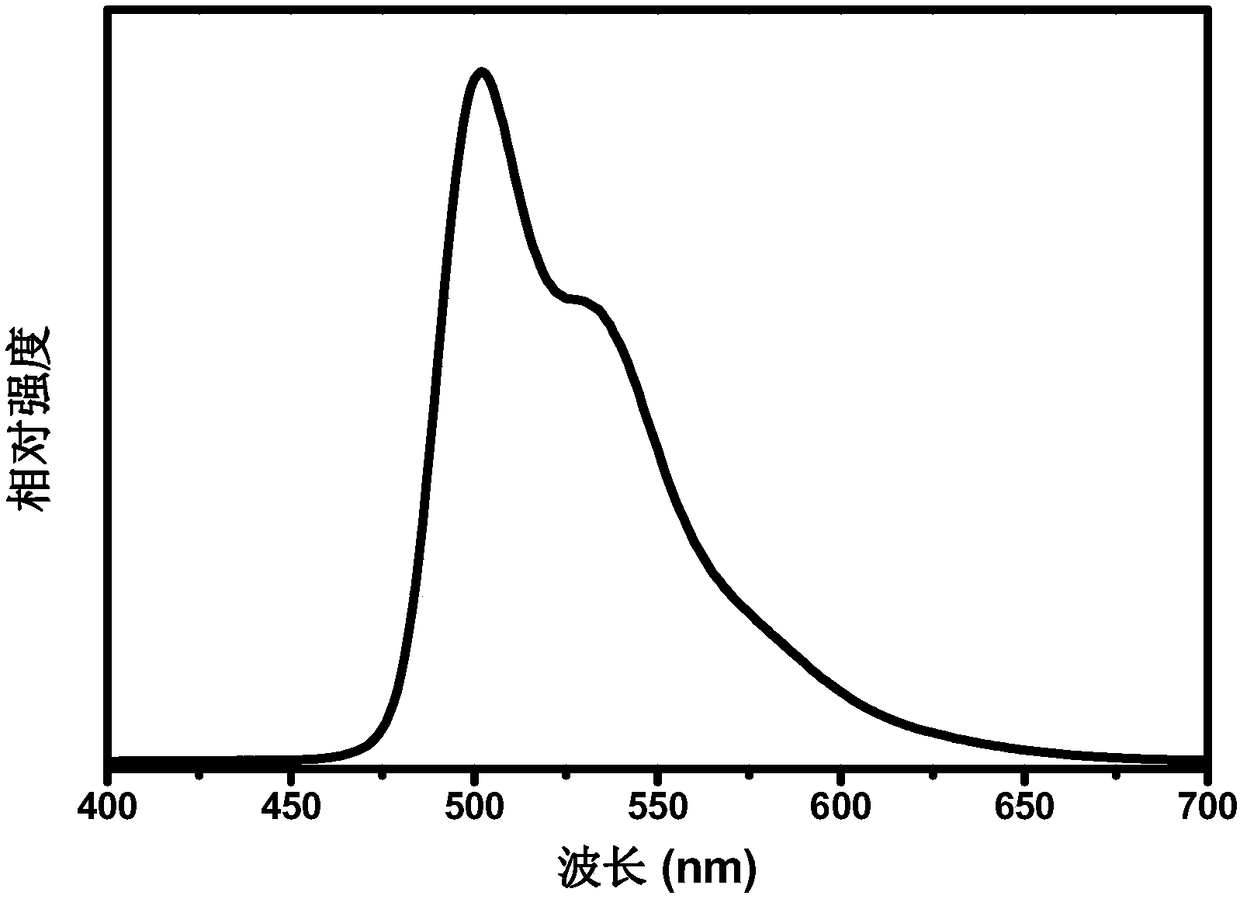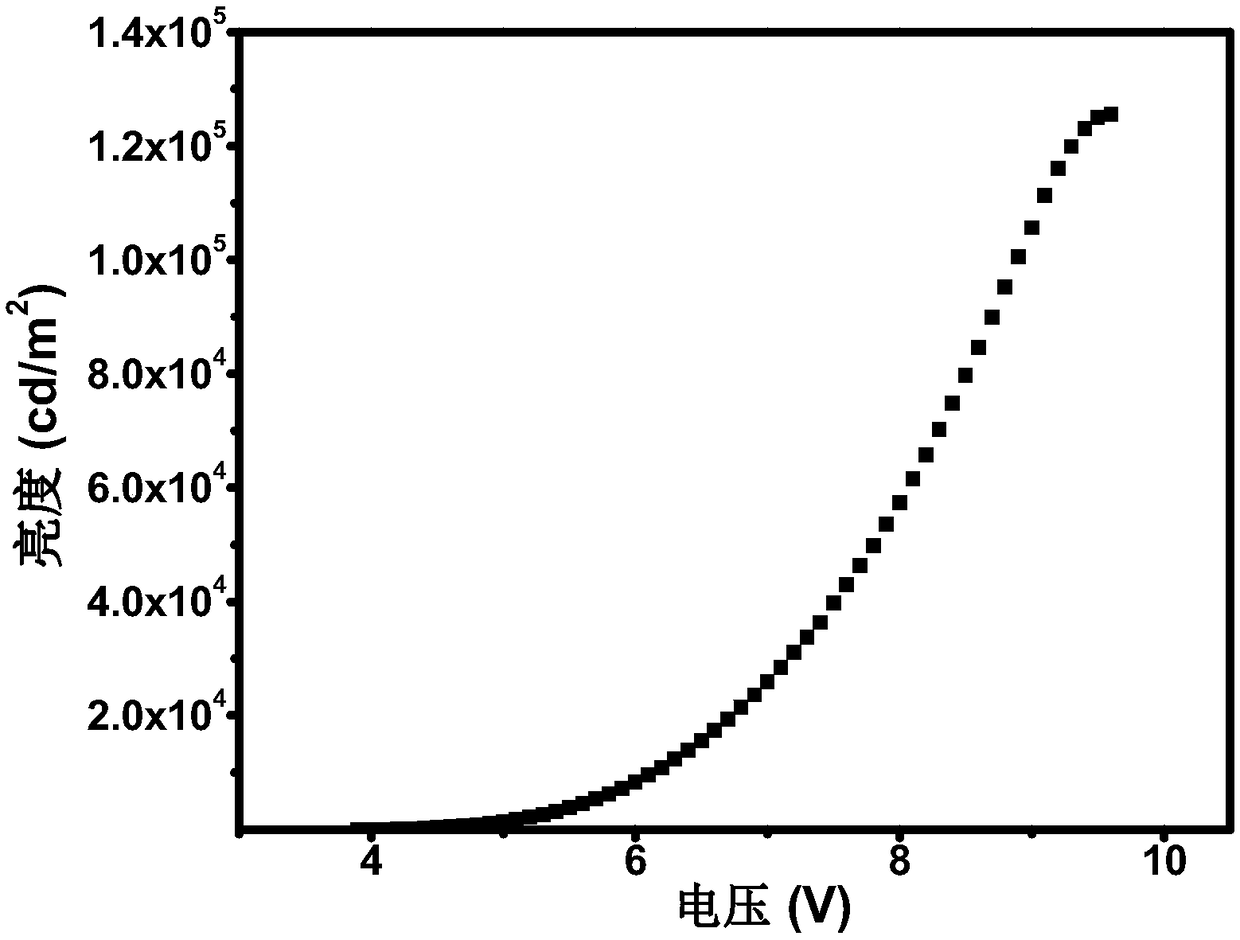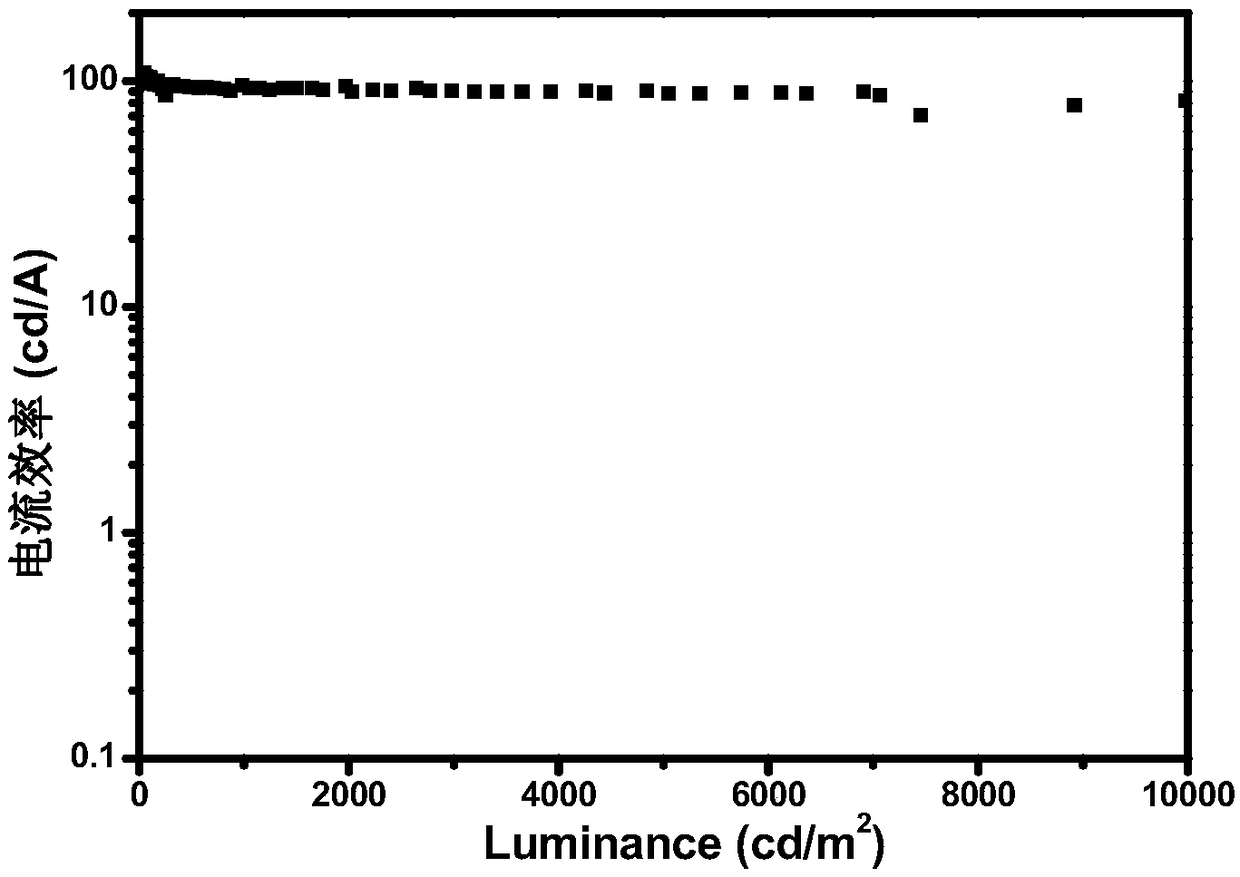Iridium complex taking dithiolyl ring/aromatic heterocyclic phosphate compound as auxiliary ligand
A technology of iridium complexes and aromatic heterocycles is applied in the fields of electroluminescent devices and organic electroluminescent devices, and can solve problems such as carrier imbalance, lowering device efficiency, etc., achieving simple preparation method, improving electron mobility, high yield effect
- Summary
- Abstract
- Description
- Claims
- Application Information
AI Technical Summary
Problems solved by technology
Method used
Image
Examples
Embodiment 1
[0033] Embodiment 1 Preparation of auxiliary ligand bisthiodiphenyl phosphate sodium aqueous solution
[0034] Reflux bromobenzene and phosphorus trichloride (2:1) in toluene under anaerobic conditions for two hours, separate by column chromatography after cooling to obtain diphenylphosphorus chloride, and then dissolve them with sulfur powder in toluene and anaerobic conditions. Reflux for two hours under conditions, then stir in sodium hydrogensulfide aqueous solution for two hours to obtain dithiodiphenylsodium phosphate aqueous solution The yield reached 100%.
[0035] The above method can be used to prepare other bisthio aromatic ring / heteroaryl ring phosphoric acid compound sodium salt aqueous solution:
Embodiment 2
[0036] The preparation of embodiment 2 iridium complexes of the present invention
[0037] The main ligand 2-phenylpyridine and IrCl 3 Reflux 10 hours in ethoxyethanol solution with the ratio of 2:1, the chlorine bridge complex of iridium obtained by cooling filtration; Refluxed in ethoxyethanol for two hours to obtain the crude product of the iridium complex, and column chromatography yielded 13.80 g of pure SSdpp 1 (yield: 92%). and further placed 5 g of SSdpp 1 in a quartz tube at 10 -5 Heating and sublimation purification under Pa vacuum conditions obtained 4.7 g of luminescent materials (sublimation rate 94%) that met the requirements for device preparation. The response looks like this:
[0038]
[0039] Gained iridium complex SSdpp 1 is analyzed as follows by proton nuclear magnetic resonance spectrum and high-resolution mass spectrometry:
[0040] 1 H NMR (400MHz, CDCl 3 )δ8.56(d,2H),8.16(t,J=7.4Hz,2H),7.82(d,J=4.3Hz,2H),7.52-7.45(m,10H),7.42–7.15(m,14H ), 6....
Embodiment 3
[0046] Preparation of Example 3 Iridium Complex SSdpp 1 Organic Electroluminescent Device
[0047] The preparation of the organic electroluminescent device of the present invention will be described below by taking SSdpp 1 as the luminescent center of the luminescent layer to prepare an organic electroluminescent device as an example. The structure of OLEDs device includes: substrate, anode, hole injection material, hole transport layer, organic light-emitting layer, electron transport layer, electron injection material and cathode. The substrate is glass, the anode is indium tin oxide, and the hole injection layer is 2,3,6,7,10,11-hexacyano-1,4,5,8,9,12-hexaazabenzene Phenanthrene HAT-CN (5nm), the evaporation rate is 0.05nm / s; the hole layer is made of 4,4'-cyclohexylbis[N,N-bis(4-methylphenyl)aniline TAPC material (50nm) , the evaporation rate is 0.05nm / s; the electron transport layer adopts 1,3,5-tris[(3-pyridyl)-3-phenyl]benzene TmPyPb (50nm), the evaporation rate is 0.0...
PUM
| Property | Measurement | Unit |
|---|---|---|
| thickness | aaaaa | aaaaa |
| luminance | aaaaa | aaaaa |
| current efficiency | aaaaa | aaaaa |
Abstract
Description
Claims
Application Information
 Login to View More
Login to View More - R&D
- Intellectual Property
- Life Sciences
- Materials
- Tech Scout
- Unparalleled Data Quality
- Higher Quality Content
- 60% Fewer Hallucinations
Browse by: Latest US Patents, China's latest patents, Technical Efficacy Thesaurus, Application Domain, Technology Topic, Popular Technical Reports.
© 2025 PatSnap. All rights reserved.Legal|Privacy policy|Modern Slavery Act Transparency Statement|Sitemap|About US| Contact US: help@patsnap.com



